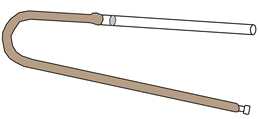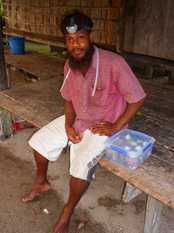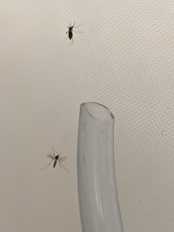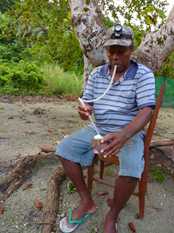Standard Operating Procedure for performing Human Landing Catch (HLC)
Tanya L L Russell, Kyran Staunton, Thomas R Burkot
Disclaimer
This Standard Operating Procedure may be used for training and reference purposes. Users are responsible for ensuring any edits to this document are produced and approved in accordance with all relevant legal and ethical requirements governing the surveillance operation.
Abstract
The purpose of this SOP is to outline the materials and processes required to perform a human landing catch (HLC) of adult mosquitoes.
Description: HLC consists of collectors catching any mosquitoes that are attracted to them. Kerr (1933) working in West Africa was largely responsible for developing the HLC method, with has been widely used and is considered the gold standard method.
Target species and physiological states: Captures host-seeking females of many species.
Entomological surveillance indicators: Adult vector occurrence and density as well as adult vector behaviour (human biting rate, biting time, biting location).
Advantage: Is one of the only tools that can effectively estimate human biting rate, biting times and location. The equipment and supplies are inexpensive and portable.
Disadvantage: This method is labour intensive. There is a risk that field staff may become infected with mosquito-borne diseases. To mitigate the risk of malaria anti-malarial prophylaxis is provided; regarding arboviruses, HLC should not be done during times of known arbovirus transmission. Results depend on the collectors’ skill and on the attraction a person exerts on mosquitoes.
Sample period: Catches are performed hourly across a 12 h or 24 h period, usually overnight.
Data: Data: Total number of host-seeking females per sampling effort (by species). When necessary, field data is merged with the results of subsequent laboratory analyses.
Before start
Human ethics
Where human ethics approval is required and granted, human landing catch participants will be recruited following standard informed consent procedures. The potential risks and benefits of mosquito sampling will be discussed verbally in the local language. It will be explained that participation in human landing catch would involve exposure to potentially infectious mosquito bites but collectors will be given anti-malarial drugs to prevent them from becoming infected with malaria.
Village collectors should be screened for malaria parasites using RDTs. If any of the collectors are infected with malaria, they should be treated with the antimalarial standard of care in the country where the work takes place.
Attachments
Steps
Temporarily store the mosquitoes in labelled collection cups until processing and long-term storage.
For details on processing and storage see Tanya Russell, Kyran Staunton, Amanda Murphy, Thomas Burkot 2022. Standard operating procedures for mosquito vector surveillance, processing and storage. protocols.io https://dx.doi.org/10.17504/protocols.io.eq2lyn13qvx9/v3
Additional notes
Whenever possible landing mosquitoes should be caught before they bite.* The catches for each hourly interval should be stored in separate collection cups labeled with date, location and hour of collection (e.g., 6pm to 7pm, 7 pm to 8 pm, etc).
- Usually there are multiple stations where HLC is conducted at across the night, the collectors (singularly or in a pair) should rotate across the stations to minimise bias due to the attractiveness (or skill) of individuals. One full night sampling effort may be completed by a team of two collectors with one individual collecting ‘early’ from 18:00 – 24:00, and another individual collecting ‘late’ from 24:00 – 06:00.
- Do not collect more than five mosquitoes in one sucking tube before transferring them to the paper cup.
- Mosquito collections for anopheline will be recorded for each hour between sunset and dawn but the hours of collection may be changed based on knowledge of the biting behaviours. Generally, it is good that collections start before the time of earliest biting and end after host seeking has stopped.
- When collections occur at night or in dark locations, torches are required – head torches are very useful as they provide a hands-free solution. People have used red lens (~680 nm) which is considered invisible to mosquitoes and therefore does not impact feeding behaviour.






